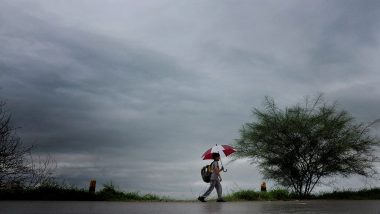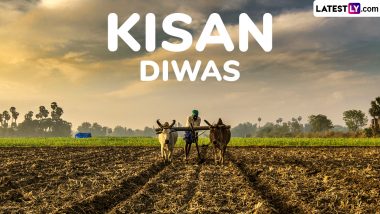London, February 10: Scientists, including those of Indian-origin, have developed a new system which they say can provide farmers in India early forecasts of expected variations in the monsoon season, an advance which may help reduce crop losses.
The researchers, including those from the European Centre for Medium-range Weather Forecasts (ECMWF) in the UK, used their long-term global weather forecasting system to predict when the summer monsoon will start, and how much rainfall it will bring. Winter 2020: Srinagar Records Coldest Night of Season so far, Mercury dips to Minus 3 Degree Celsius.
In the study, published in the journal Climate Dynamics, they noted that the model provided accurate forecasts a month in advance for the timing of the monsoon in India's major agricultural regions.
The scientists believe providing this information to farmers could help them prepare earlier for unexpected heavy rainfall or extended dry periods, both of which regularly destroy crops in India.
According to the researchers, the Indian monsoon brings around 80 per cent of India's annual rainfall with even small variations in the timing of its arrival potentially having a huge impact on agriculture.
"Accurately predicting these year-to-year variations is challenging, but could be the difference between prosperity or poverty for many families," said study co-author Amulya Chevuturi from the University of Reading in the UK.
"The forecasting accuracy we identified in India's main agricultural regions provides a clear opportunity for this system to make a positive difference to people's lives," Chevuturi said in a statement.
He believes a month's warning of a drought or deluge is a valuable time to understand the likely impact on water availability and for the farmers to make provisions to reduce the threat to food supplies.
"Better forecasts save lives, and this kind of in-depth global analysis is only possible when the best scientists and leading research institutes work together for the benefit of the whole planet," Chevuturi added. The monsoon season in India begins around 1 June every year, starting in south west India before spreading across the whole subcontinent.
In the study, the scientists analysed 36 years' worth of monsoon data to evaluate for the first time the effectiveness of the ECMWF's latest seasonal forecasting system -- SEAS5 -- in predicting how the Indian monsoon would differ from the long-term average. They compared forecasts from 1 May each year from 1981-2016 with actual observations of the monsoons that followed.
The team found that the forecasts were accurate for the large-scale processes, like temperature and winds, that drive the monsoon rainfall across India. According to the scientists, SEAS5 was good at predicting early or late monsoon arrival over the important agricultural regions along the river Ganges plains and the eastern and western coasts of India.
The study could also identify deficiencies in the system, which the researchers believe could pave the way for model improvements, potentially providing more detailed and accurate seasonal long-term monsoon forecasts.
However, the scientists said the forecasts tended to overestimate rainfall over the mountainous Western Ghats and Himalayan regions, and underestimated rainfall along the plains of the river Ganges in the north of the country, and its delta at the Bay of Bengal.
They added that the predictions were correct for the monsoon rainfall pattern across India overall, making them useful for planning purposes.
(This is an unedited and auto-generated story from Syndicated News feed, LatestLY Staff may not have modified or edited the content body)













 Quickly
Quickly




















